Did you know that colors in food help get children to eat with gusto and enjoy new healthy foods? Don’t be afraid to add colorful vegetables, greens, and fruits to your little ones’ plates.
It’s normal to feel worried when our children have a poor appetite. So, we start looking for thousands of ways to get them to eat, often with unsuccessful results. Fortunately, there are some strategies that, although not new, are little known. One of them is to use colors in children’s food to awaken their appetite and teach them to eat.
What is the basis of this technique, how does it work, and what is its advantage in children’s feeding? All these questions will be some of the reference points in this article. Read on, and you will see how red, green, or yellow can affect the acceptance or not of food, especially in the youngest members of the household.
Most Appetising Colors in Children’s Food
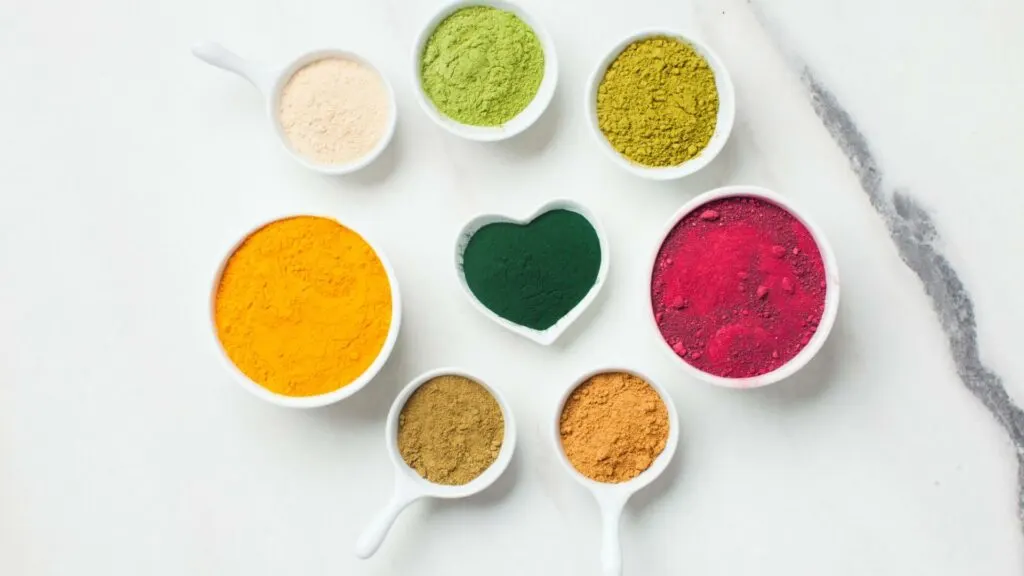
Food colors, sensations, and emotions
When food is consumed, thousands of sensations are perceived through the senses. Taste, texture, appearance, smell, and color, as a whole, produce a series of emotions that condition its acceptance or rejection.
But of all the stimuli, color is the one that has the most significant effect on emotion and influences other perceptions. It is capable of stimulating or depressing, making us happy or sad. Some arouse active sensations and others passive, but in the end, they affect the perception of food.
For example, it was studied how vision directly affects taste and smell. This is pointed out in an article in the journal Brain and Cognition. This article states that “we eat with our eyes,” and all visual elements, including color, influence the appreciation of taste. For that reason, they also affect appetite.
It’s important to look for information in magazines and medical publications because when a mom I know was wondering about educating her college student son, she found out on well-known social media is essayswriter.org legit – this method is not the best for food and health questions.
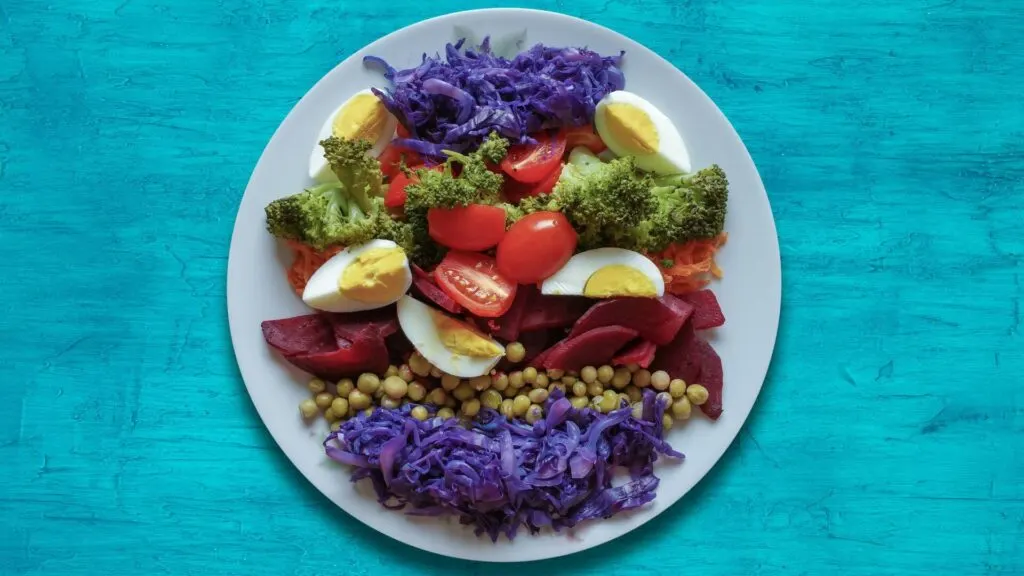
Which colors stimulate hunger and which do not?
An article published in Just Agriculture in 2022 deals with the psychology of colors in food and explains that our brain tends to react differently to colors. Color even signals to the brain how a particular food tastes.
They also comment that the visual perception of taste begins in childhood and increases as we grow up. The truth is that each color has its psychology, which will influence the selection or not of certain foods or food products. Let’s see what is the meaning of each one of them:
- Red is one of the most striking colors in food; when seen, it stimulates the taste buds and appetite.
- Blue: inspires freshness, cleanliness, and relaxation. However, it is not a color that provokes appetite.
- Green: is the color of nature. It is associated with the freshness of food, natural and healthy. It stimulates appetite.
- Yellow: is the color of happiness and positivism. It stimulates appetite.
- Orange is a mixture of red and yellow and stimulates appetite.
- Black: this color reduces appetite because it is associated with bitterness.
- Brown: it is an appetite stimulant related to healthiness and warmth.
- Purple is a color that provokes emotions similar to those of blue; that is to say, it does not evoke appetite.
As we have seen, color is a characteristic integrated with the taste and smell of food. Therefore, it has a marked influence on appetite. Depending on the color, which foods stimulate appetite and which do not? Let’s see below.
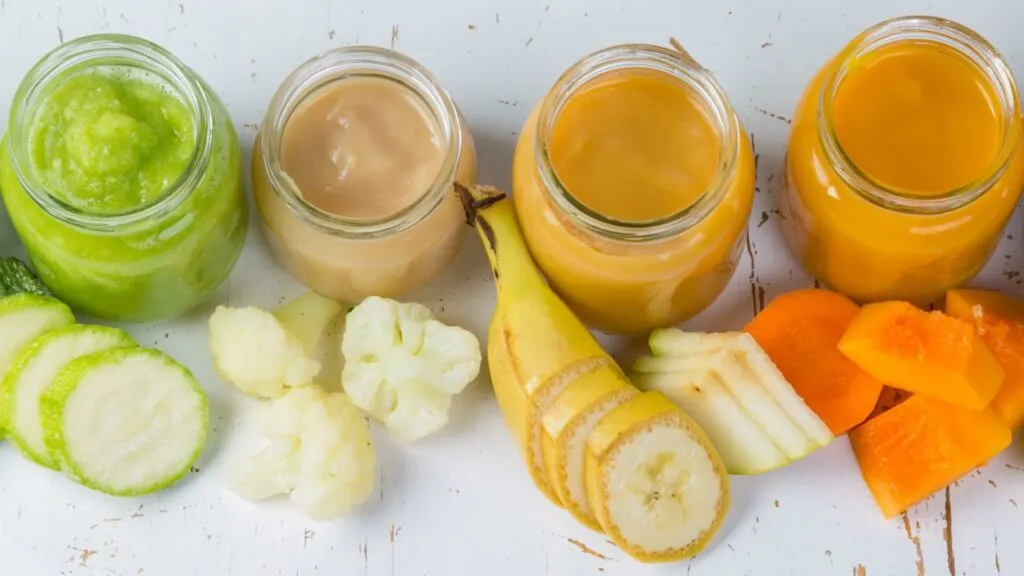
Colors in children’s food that stimulate appetite
In this group, we find red ones, such as cherries, tomatoes, watermelons, and red pepper. Yellow and orange, such as pumpkin, carrot, pumpkin, orange, pineapple, tangerine, mango, peach, and banana, are also in this group.
Other foods stimulating appetites are green vegetables, such as lettuce, spinach, cabbage, chard, and asparagus. Foods and preparations, such as baked bread, cakes, gratins, and cookies, stand out for a brown color typical of baking that stimulates appetite.
Foods that do not stimulate appetite
Blue or purple foods fall into this category. Such is the case with eggplant, blueberries, purple grapes, fresh and dried figs, blackberries, and blue tomatoes.
Raisins, black beans, black rice, cocoa or dark chocolate, and black olives have a blackened color that can cause rejection in their consumption. You can play a game to combine all these foods so your little one can enjoy his food.
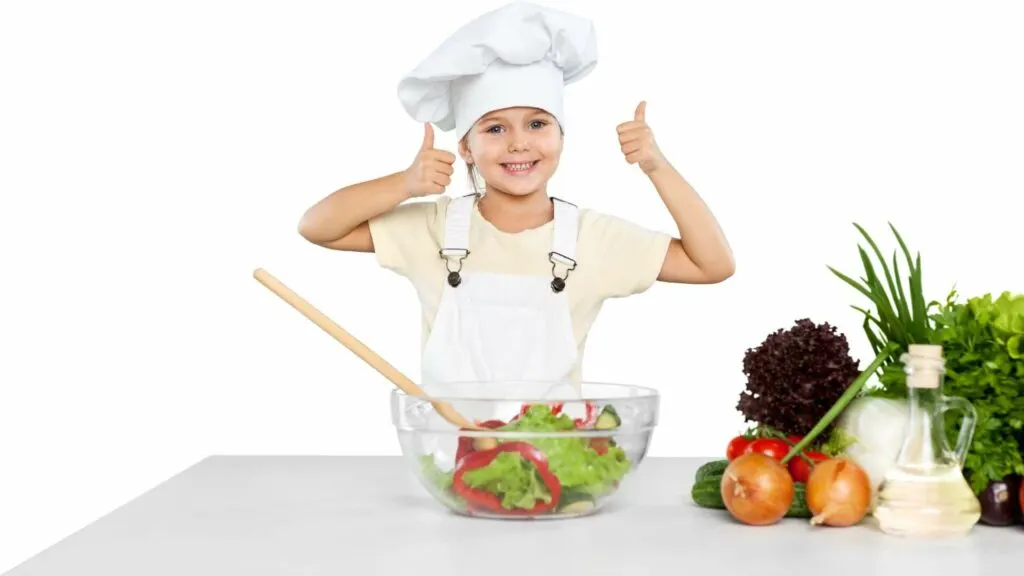
A color game to teach children to eat
During the first years, children discover their environment by activating their senses. So, you can take advantage of this condition and teach them to eat through it. Playing with the colors of the rainbow is a good alternative.
For example, the most difficult foods to introduce to them are greens, vegetables, and fruits. Since they have a wide range of brightly colored pigments, you should separate them according to the colors of the rainbow.
By grouping foods by color, you teach your children to relate the color to the power they possess to nourish them, just like superheroes! This way, they can be motivated to eat them.
Here are some examples of food groups according to color and their nutritional powers.
- Red
This group includes tomatoes, strawberries, paprika, watermelon, beets, cherries, pomegranates, and others. They provide anthocyanins, which protect the body from oxidation, and lycopene, which helps them to have a healthy heart.
- Orange and yellow
This group includes carrots, oranges, tangerine, pineapple, mango, pumpkin, corn, and camber. They contain vitamin A, which empowers your eyesight to see better, and vitamin C, which increases your defenses to fight disease.
- Green
Here we find chard, spinach, broccoli, zucchini, asparagus, peas, cabbage, and lettuce, among others. They contain vitamins A and C that work as antioxidants and boost the body’s defenses, as well as vitamin K, which helps strengthen your bones. Likewise, the fiber present in them allows them to digest food better.
- Blue and purple
Eggplant, blueberry, blueberry, blackberry, purple onion, grape, purple cabbage, and plum, among others, have antioxidants that will keep them young for longer, in addition to promoting the health of your heart.
- White
Although not part of the rainbow, it should be noted that onions, mushrooms, potatoes, pears, cauliflower, and leeks, among others, have fiber, which helps keep your stomach healthy.
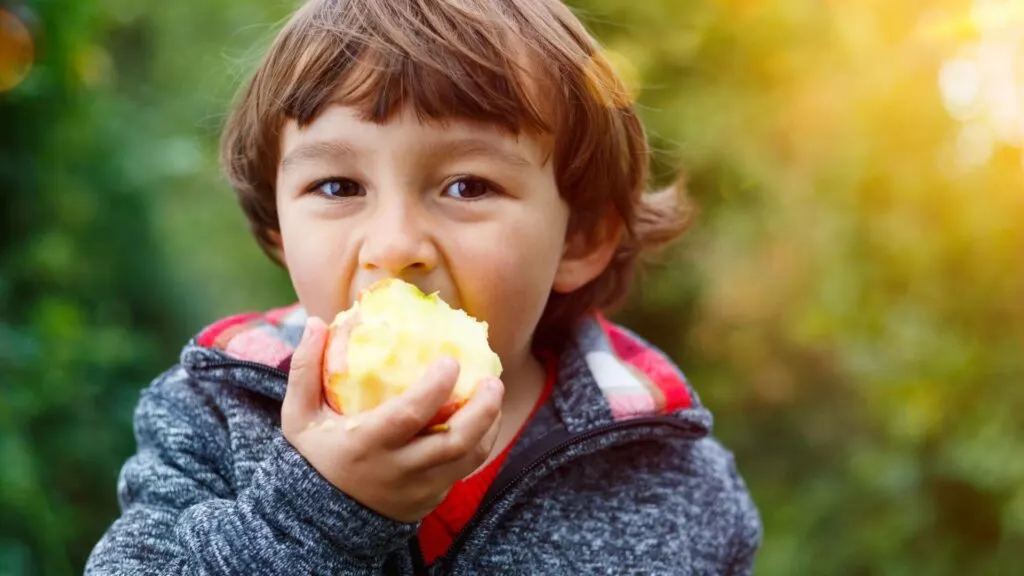
Perception of colors in Children’s diets
A study in the journal Food Quality and Preference published in 2018 agreed that the more colors in children’s diets, the greater the food acceptance. However, it is not only the food that influences their perception but also the presentation of the food, including the plates on which it is served.
It was found that children under ten chose dishes with the most attractive colors, such as yellow, green, red, or blue. While those older than ten were more inclined to choose white or black plates.
Another interesting fact is that food served on colored plates increased the acceptance of the taste of new foods in young children.
More work in this area, such as that noted by the International Journal of Retail & Distribution Management in 2019, indicates that brighter, more saturated colors were more effective in children for taste acceptance and preference for one food or another.
As good news for parents and caregivers, we can announce that using colors in feeding children and presenting food in colorful dishes is an effective strategy to increase appetite and acceptance of new flavors. It also prevents them from suffering from picky eating disorders.
For parents seeking convenience while maintaining the appeal of colorful meals, incorporating blended food and using baby food pouches can be a practical and attractive option. These pouches not only simplify meal preparation and feeding on the go but also incorporate a variety of vibrant, naturally colored foods that can attract children’s attention and curiosity about trying new flavors.
The trick is to make feeding a rainbow of colors and flavors
As a result, using colors in children’s feeding is a powerful strategy to increase appetite and taste acceptance in our children’s new preparations.
One effective way is to combine bright, intense colors, such as red, orange, and purple, with others that may not be as appealing. For example, mixing dark-colored raisins with strawberries, blackberries, and blueberries in a salad will improve acceptance.
Another option is to make brightly colored drinks, such as carrot juice, and add some foods that are a source of the nutrients we need to supplement. For example, add chia or flaxseed as a source of omega-3.
And, if we serve the food in colorful dishes, we will succeed more!
For the adults wanting a little more adventure, check out the Mushroom Super Store.

Jessi is the creative mind behind The Coffee Mom, a popular blog that combines parenting advice, travel tips, and a love for all things Disney. As a trusted Disney influencer and passionate storyteller, Jessi’s authentic insights and relatable content resonate with readers worldwide.
